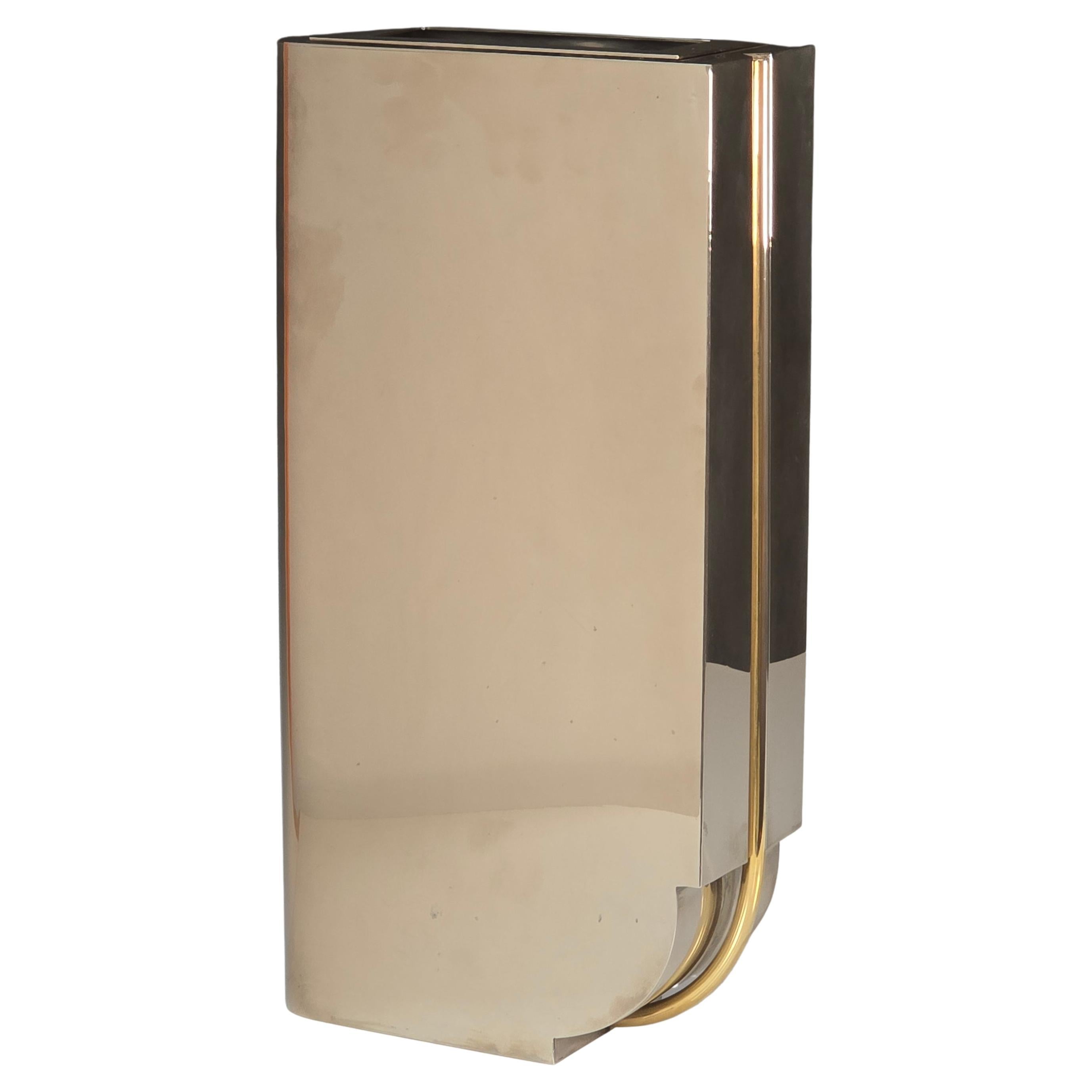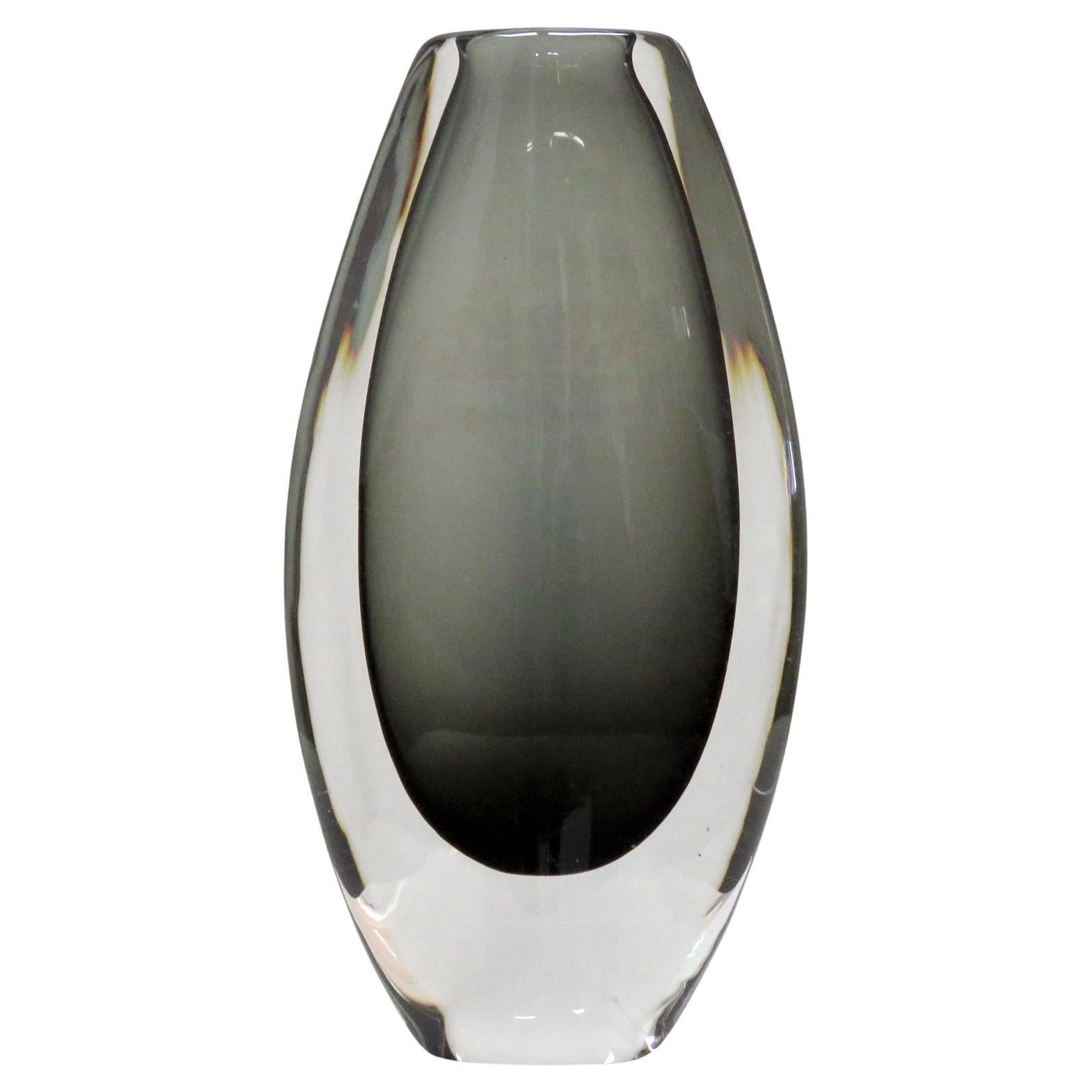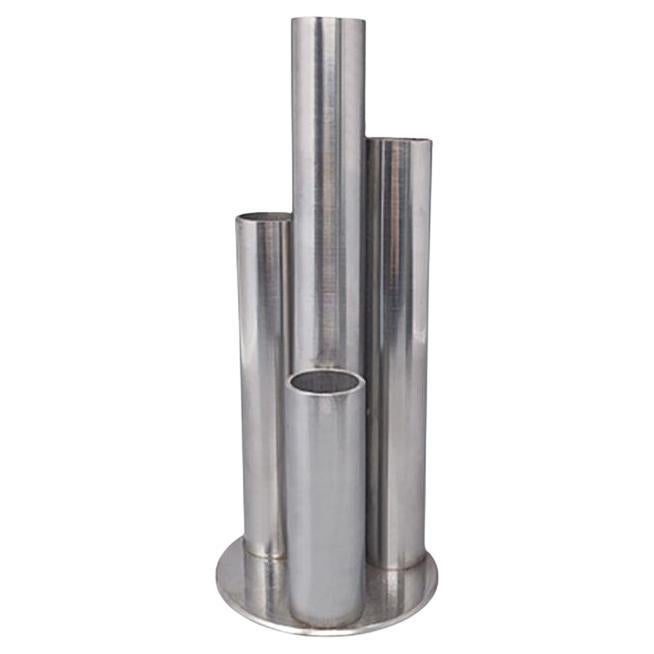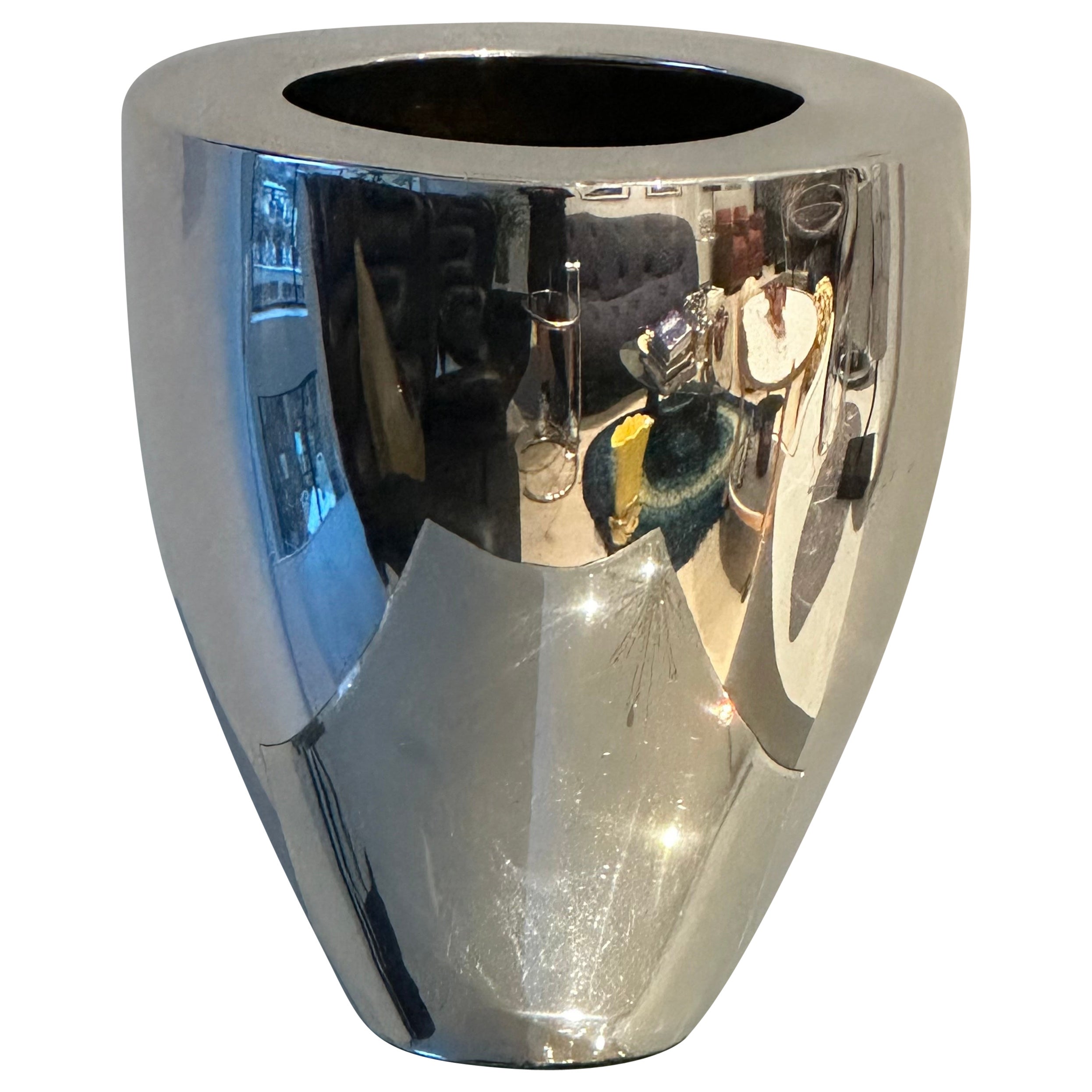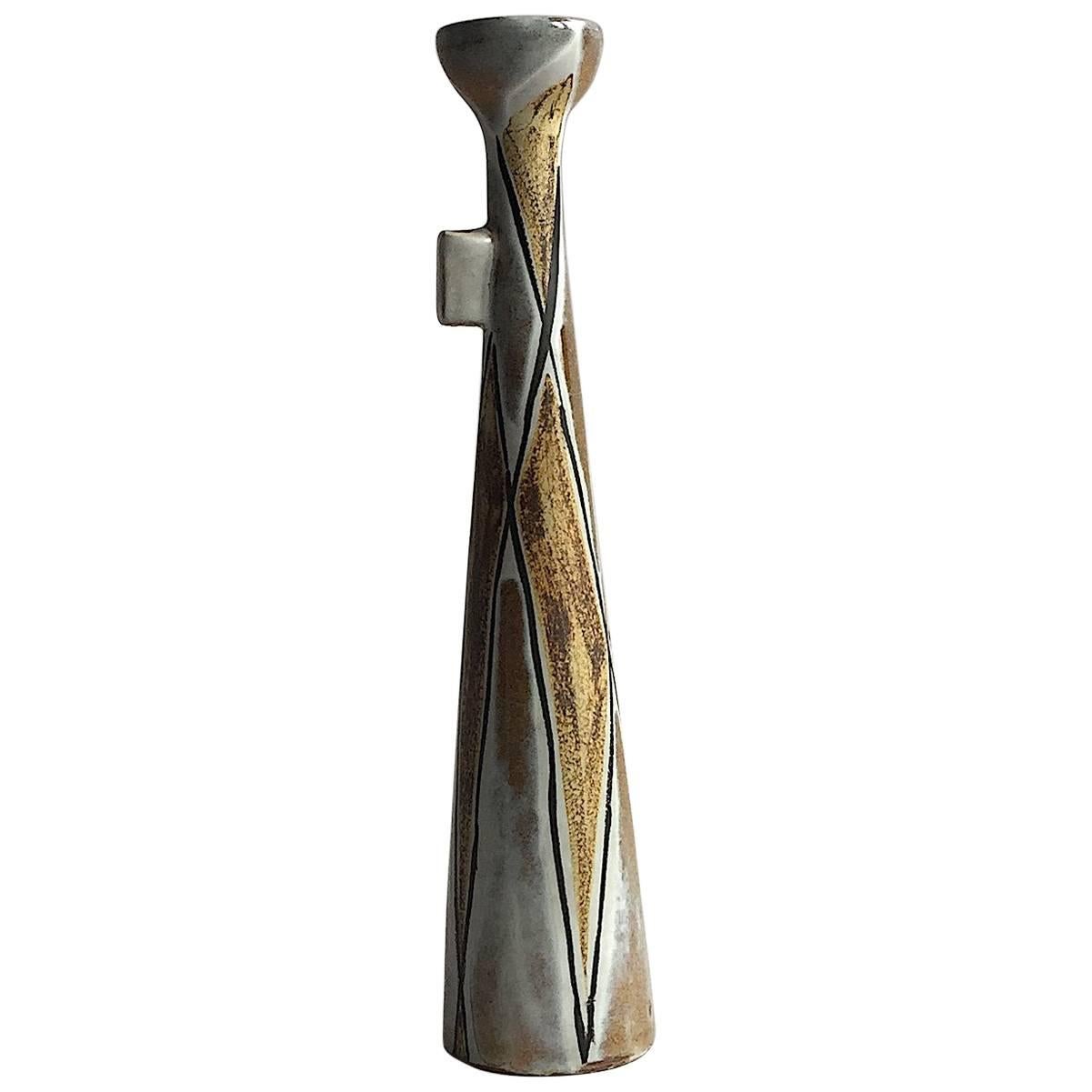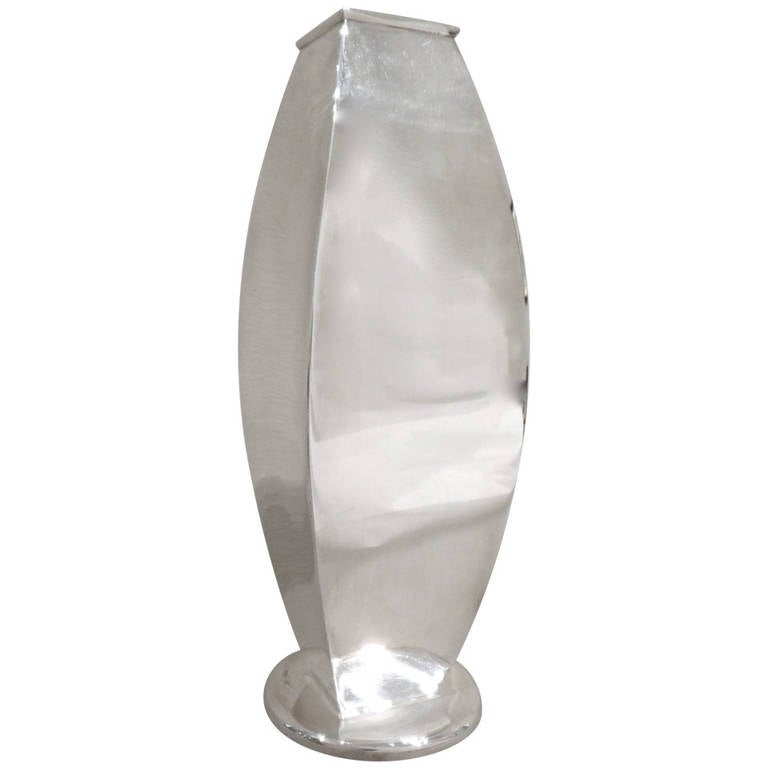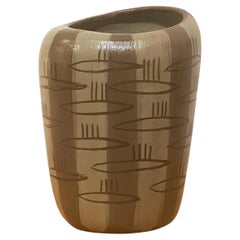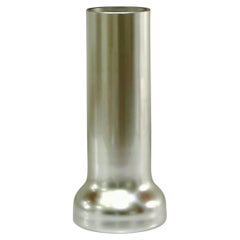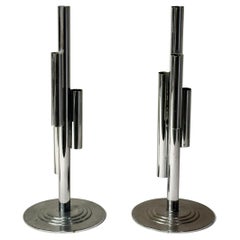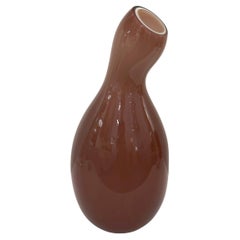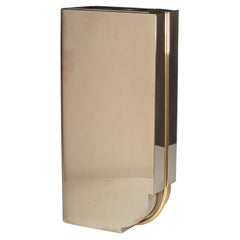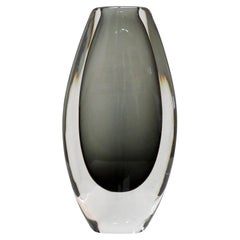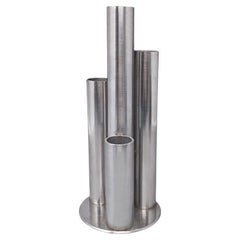Items Similar to Michael Lax Design Grainware METAAL Vase, circa 1992
Want more images or videos?
Request additional images or videos from the seller
1 of 11
Michael Lax Design Grainware METAAL Vase, circa 1992
$395
£307.53
€349.75
CA$568.31
A$624.26
CHF 326.24
MX$7,444.87
NOK 4,131.14
SEK 3,848.50
DKK 2,613.53
About the Item
Measures 12-3/4” high, 7-1/2” wide at the mouth, 2-7/8” wide at the base.
Stamped on base
METAAL
Grainware c 1992
Michael Lax Design
ML-4012
There are some light scuffs and scratches especially toward the base, patina to finish. See images for detail.
Michael Lax (1929–1999) was an American industrial designer who created household products for companies such as Copco, Lightolier, Dansk, Salton, Metaal, Mikasa, Tupperware, and American Cyanamid. Several of his best-known products, including the Lytegem lamp by Lightolier and the Copco enamel-coated teakettle with teak handle, are represented in permanent museum collections.
Personal life
Lax was born on November 8, 1929, in New York City, New York. He grew up on Morton Street in the west village and went to elementary school at PS 2. He graduated from the New York School of Music and Art in New York City (1947) and Alfred University's New York State College of Ceramics (1951). In 1950, he married Rosemary Raymond; they were divorced in 1978.
Design career
In 1954, Lax went to Finland with his wife Rosemary and 2 year old daughter, Jennifer, on a Fulbright Fellowship, where he learned Scandinavian modern design. He was hired by Russel Wright, in 1956, to work on a series of dinnerware designs. Lax did freelance work until 1960 when he began to work on enameled cast iron cookware for Copco; this was his first break as a solo designer. Lax designed a line of cast-iron and porcelain enamel cookware for Copco including a 1962 enamel-coated teakettle with a bent teak handle which became one of his most recognizable pieces. More than one million of these teakettles were sold before it was discontinued in the 1980s. Other popular Copco pieces designed by Lax include a fondue pot, a casserole/paella pan, and a Dutch oven. These pieces are no longer manufactured and are considered collectable.
Another of Lax's well-known pieces was a low-voltage, high-intensity lamp that he designed for Lightolier in 1965. The lamp, named the Lytegem, had a minimalist design with a cube base and a ball reflector on a telescoping arm. Shortly after its release, the lamp had captured 10% of the market It is now part of the permanent collection at the Museum of Modern Art (MOMA) in New York City.
Lax's other designs included "Cut Outs for Play", playground equipment designed for U.S. Plywood, a treehouse for adults, a yogurt maker for Salton, containers for Tupperware, glasses and tableware for Mikasa and Rosenthal, and an acrylic bathtub for American Cyanamid.
Lax was known to be a perfectionist with a hands-on approach to design. He made his own plaster casts for the designs that he created, and he traveled to countries where his products were being made to oversee production.
Exhibits
Lax's work has been included in exhibits and permanent museum collections, including:
Lytegem for Lightolier, 1965 - in the permanent design collection at MOMA
Household air ionizer in the form of a simple black pyramid by Amcor, 1980 - in the permanent design collection at MOMA
Copco fondue pot - Smithsonian American Art Museum
Design Since 1945, 1983 - an exhibit at the Philadelphia Museum of Art
Sculpture career
Later in his career, Lax became increasingly interested in sculpture. In 1977, he received a Rome Prize to study art at the American Academy in Rome. He returned to Italy in 1984 and opened a studio in Pietrasanta, Tuscany, where he worked on a series of architectural forms in marble and cast bronze. Some of these items were exhibited at the Wainscott Gallery, Wainscott, New York. A series of cast aluminum bowls that he designed for Metaal (by Grainware) were formed from the breasts of a series of bronze nudes that he had sculpted.
Lax died on May 25, 1999, in Bridgehampton, New York. - Source: Wikipedia
- Creator:Michael Lax (Designer)
- Dimensions:Height: 12.75 in (32.39 cm)Width: 7.5 in (19.05 cm)Depth: 7.5 in (19.05 cm)
- Style:Post-Modern (Of the Period)
- Materials and Techniques:Aluminum,Polished
- Place of Origin:
- Period:1990-1999
- Date of Manufacture:1992
- Condition:Wear consistent with age and use. There are some light scuffs and scratches especially toward the base, patina to finish. See images for detail.
- Seller Location:Cathedral City, CA
- Reference Number:Seller: OC 94781stDibs: LU8352241115392
About the Seller
5.0
Vetted Professional Seller
Every seller passes strict standards for authenticity and reliability
Established in 2000
1stDibs seller since 2023
23 sales on 1stDibs
Typical response time: <1 hour
- ShippingRetrieving quote...Shipping from: Cathedral City, CA
- Return Policy
More From This Seller
View AllLee Rosen Design Technics Incised & Slip Decorated Abstract Design Vase ca 1950s
By Lee Rosen, Design Technics
Located in Cathedral City, CA
Lee Rosen for Design Technics Incised and Slip Decorated Abstract Design Vase, ca 1950s
This is a gorgeous and unique Design Technics vase by Lee Rosen that features a biomorphic sh...
Category
Mid-20th Century American Mid-Century Modern Vases
Materials
Ceramic, Pottery
Karim Rashid for Leonardo Germany Limited Edition New Move Glass Vase, ca 1999
By Karim Rashid
Located in Cathedral City, CA
Karim Rashid for Leonardo Germany Limited Edition New Move Silver Glass Vase, ca 1999.
Measures 8” high, base 3-1/2” wide, and mouth 2-1/4” wide.
There is a small scratch of silver finish/coating on glass (we've posted an image of the interior and exterior at the area of the scratch). There is also a faint area of small blemishes at the base See images for more detail.
If there’s one thing karim rashid hates, it’s trophies. The 40-year-old designer has more than 40 of them, from big international ones like the 1999 George Nelson Award (given for breakthrough furniture design), to quaint little Canadian ones like Designer of the Year 2001. “It came with a little pin,” says Rashid, “and a … a … very nice …” He tries to describe the shape of the award with his hands but gives up. “It’s time that whole trophy thing changes. It’s kitsch. They’re functionless things.” Rashid was asked to design one for the DaimlerChrysler Design Awards (he’s a past recipient). “I was going to make it electro-luminescent. When the lights go out, it has a sensor so it turns on,” he says. But the trophy-as-night-light, a reminder of one’s worth in the darkest hours, didn’t impress Chrysler’s people. He never heard back.
They may well be gnawing their knuckles over that decision right now because Rashid’s conquest of the realm of product design is all but complete. A lush and suitably worshipful retrospective of his work, Karim Rashid: I Want to Change the World (Thames & Hudson; 249 pages), hits Australasian bookstores this month. There was a crowd around anything with his stamp on it-including stools, chess sets and storage units-at the recent International Contemporary Furniture Fair in New York City. More than 2 million North Americans are throwing their rubbish into a receptacle he designed, while 750,000 or so park their rears on one of his cheapo plastic chairs. It’s not just in North America. He has been dubbed Der Poet des Plastiks by a retailer in Germany and the prolifico progettista Americano by Interni magazine in Italy.
Trophies he may despise, but accolades Rashid can handle. The problem with being the Most Famous Industrial Designer in All the Americas is that you’re still less famous than someone who got kicked off Survivor the first week. Most people cannot name the designer of one nonclothing item in their homes. Rashid, who was born in Egypt, raised in Canada and is living in New York City, is more than happy to bring an end to this anonymity. Not just because he wants to be famous, although there seems to be that, but because he believes design should be a bigger part of the social discourse. “I have been almost alone in this country, trying to make design become a public subject,” he says.
His chief method of persuasion is to make the banal better so that people notice design more. He likes creating expensive furniture and perfume bottles just fine, but what really gets his juices going is the everyday: manhole covers, a cremation urn, disposable cigarette lighters, garbage bins, salt and pepper shakers, plastic pens. “I want American Standard to come to me to do the toilets for Home Depot,” he says.
In many ways Rashid is more like an itinerant industrial evangelist than a designer. He traveled 200 days last year. He claims to have been to every major mall in America, where he signs his products in high-end design stores and trolls about observing humans interacting with the objects around them. He has taught at design schools for more than a decade, and his work has been in 11 art shows in the past eight months. But mostly he has proselytized the corporate barbarians. And like any good missionary, he has learned to speak the language of his converts. One of the first things he does when he gets new clients is tour their factories to understand their manufacturing capacity. He also visits the retail outlets to see how the product might be displayed. And he really knows how to sell, especially himself. “I work with a guy in L.A.,” says Rashid, declining to name him. “He made a lot of really bad furniture. His business was hand-to-mouth. I proposed seven or eight projects. The pieces I’ve done for him have already become iconic.” The subtitle of his monograph, I Want to Change the World, is not ironic, just characteristically immodest.
“Most industrial-design studios try to interpret a client’s needs and come up with a style,” says Paul Rowan, co-founder of housewares manufacturer Umbra. “Karim has his own personal vision.” It helps that Rashid’s vision incorporates things that Rowan needs, like a design that will stack and ship easily and that creates little waste in the making.
Rashid’s father was a set designer for Canadian TV who rearranged the family furniture every Sunday. So perhaps it was ordained that Karim would grow up to become one of the pioneers in non-cheesy plastic, making objects that have energy and personality but aren’t wacky. He, like many of his generation, has championed the could-only-be-designed-with-computers blob. But his is not just a blob for its own sake. His Oh Chair...
Category
1990s German Minimalist Vases
Materials
Blown Glass
American Deco Pair Chrome Bud Vases, ca 1930s
By Chase Brass and Copper Company
Located in Cathedral City, CA
American Deco Pair Chrome Bud Vases, ca 1930s
Unmarked, therefore listed as "in the style" of Chase and Co.
Original vintage condition and expected wear. Some scratches throughout ...
Category
Early 20th Century American Art Deco Vases
Materials
Metal, Steel, Chrome
Marre Moerel Anatomy Series Corpus Cavernosum Murano Glass Vase Covo, Italy
By Marre Moerel, covo
Located in Cathedral City, CA
Marre Moerel Signed and Numbered Limited Edition "Corpus Cavernosum" Murano Glass Vase for Covo, Italy, ca 2001. This vase is part of her Anatomy Series and is numbered #2 of 29. The glass is a deep purple color (eggplant or wine) cased with white glass sandwiched with a pink/clear glass on the interior.
Marre has said that the shapes were in reference to the beauty of the human body and colors chosen to reflect the variety of skin tones. Highly evocative and intriguing, this design is beautiful and also evokes conversation and thought. A true piece of art!
This vase is part of a project named Smash, and curated by Emmanuel Babled for Covo in 2001. A group of famous designers (James Irvine, Jeffrey Bennet, Jerszy Seymour, Marre Moerel, Richard Hutten, Ritsue Mishima...
Category
21st Century and Contemporary Italian Modern Abstract Sculptures
Materials
Art Glass, Blown Glass, Murano Glass
Marre Moerel Anatomy Series Signed Edition Gluteus Murano Glass Vase Covo, Italy
By Marre Moerel, covo
Located in Cathedral City, CA
Marre Moerel Signed and Numbered Limited Edition "Gluteus" Murano Glass Vase for Covo, Italy, ca 2001. This vase is part of her Anatomy Series and is numbered #5 of 29. The glass is a deep purple color (eggplant or wine) cased with white glass sandwiched with a pink/clear glass on the interior.
Marre has said that the shapes were in reference to the beauty of the human body and colors chosen to reflect the variety of skin tones. Highly evocative and intriguing, this design is beautiful and also evokes conversation and thought. A true piece of art!
This sculpture is part of a project named Smash, and curated by Emmanuel Babled for Covo in 2001. A group of famous designers (James Irvine, Jeffrey Bennet, Jerszy Seymour, Marre Moerel, Richard Hutten, Ritsue Mishima...
Category
21st Century and Contemporary Italian Modern Abstract Sculptures
Materials
Art Glass, Blown Glass, Murano Glass
Marre Moerel Anatomy Series Signed Edition Corpus Murano Glass Vase Covo, Italy
By covo, Marre Moerel
Located in Cathedral City, CA
Marre Moerel Signed and Numbered Limited Edition "Corpus" Murano Glass Vase for Covo, Italy, ca 2001. This vase is part of her Anatomy Series and is numbered #6 of 29. The glass is a light pink color (almost a flesh color) cased with white glass sandwiched with orange glass on the interior.
Marre has said that the shapes were in reference to the beauty of the human body and colors chosen to reflect the variety of skin tones. Highly evocative and intriguing, this design is beautiful and also evokes conversation and thought. A true piece of art!
This vase is part of a project named Smash, and curated by Emmanuel Babled for Covo in 2001. A group of famous designers (James Irvine, Jeffrey Bennet, Jerszy Seymour, Marre Moerel, Richard Hutten, Ritsue Mishima...
Category
21st Century and Contemporary Italian Modern Abstract Sculptures
Materials
Art Glass, Blown Glass, Murano Glass
You May Also Like
Lorin Marsh Architectural Vase
By Lorin Marsh
Located in Kilmarnock, VA
An elegant and striking architectural vase crafted by Lorin Marsh Ltd during the 1970s. This tall vase features a sleek, nickel-plated brass body, showcasing clean lines and a sculpt...
Category
Vintage 1970s American Modern Vases
Materials
Brass, Nickel
$2,850 Sale Price
25% Off
Nils Landberg Vase for Orrefors, 1965
By Orrefors, Nils Landberg
Located in Los Angeles, CA
Stunning handblown, art glass 'Sommerso' vase designed by Nils Landberg and produced by Orrefors, Sweden, 1960s in grey-green hues.
Category
Vintage 1960s Swedish Mid-Century Modern Vases
Materials
Glass, Art Glass
1970s Astonishing Space Age Vase, Made in Italy
Located in Milano, IT
1970s Astonishing Space Age Vase with 4 asymmetrical tubes of different heights in stainless steel. Made In Italy. This vase is in excellent condition.
Dimension:
Diam 3,93" x 10,23"...
Category
Vintage 1970s Italian Mid-Century Modern Vases
Materials
Stainless Steel
Modernist 1970s English Silver Plated Elegant Vase
Located in London, England
A simple Modernist polished silver-plated vase with a simple yet elegant design. The vase is in a used vintage condition with a small dent on the outer edge of the rim and the base s...
Category
Mid-20th Century English Mid-Century Modern Vases
Materials
Silver Plate
$105 Sale Price
52% Off
Madoura Vase Vallauris
By Madoura
Located in Munich, DE
Vallauris Madoura vase, France, 1960.
Madoura Plein Feu Stamp, Suzanne Ramie
H 30,5 , D 6,5 bottom cm.
Category
Vintage 1960s French Mid-Century Modern Ceramics
Materials
Ceramic
$2,467
Sterling Silver Vase by Jona Torino, Italy, 1990s
Located in Torino, IT
A rectangular vase in sterling silver made by Jona Torino, Italy.
Dimensions: H 26.3 cm; W 8.4 cm; D 7.5 cm.
Weight: 764 gram.
Category
Late 20th Century Italian Vases
Materials
Sterling Silver
More Ways To Browse
Michael Hall
2 Handled Glass Glass Vases
Retro Russel Wright
Used Pots And Pans
Used Cookware
Vintage Cookware
1950s Decorative Vases With 2 Handles
Dutch Oven
Fondue Pot
Michael Lax Design
Lightolier Lytegem
Vintage Dutch Oven
Copco Enamel
Paella Pan
Enamel Cookware
Vintage Enamel Cast Iron Dutch Oven
Copco Vintage Cookware
Michel Barbier
